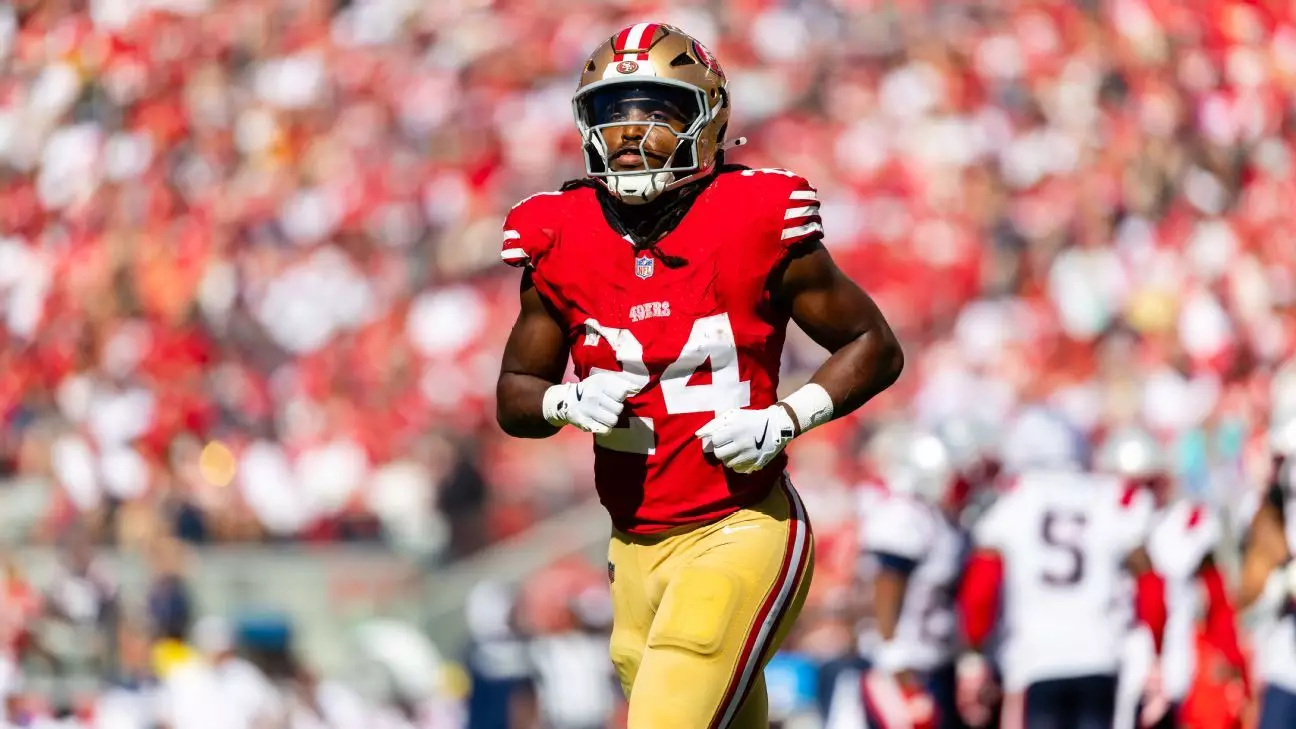The Minnesota Vikings have taken a bold step in enhancing their roster by acquiring running back Jordan Mason from the San Francisco 49ers. This strategic move is emblematic of the Vikings’ aggressive approach to the offseason, aiming not only to build on their impressive 14-3 season in 2024 but also to rectify the shortcomings that led to an early exit in the playoffs. With this acquisition, the Vikings are not just filling a gap; they are strategically positioning themselves for a more balanced and potent offensive arsenal.
The trade, which involves a swap of draft picks alongside a future sixth-round pick, signifies the Vikings’ willingness to invest in immediate success rather than hoarding future assets. The decision to bring Mason into the fold is particularly intriguing given his impressive performance in recent seasons, especially when stepping into a lead role during an injury crisis at the 49ers.
Jordan Mason: A Rising Star in the Making
At just 25 years old, Mason represents a burgeoning talent who brings youthful vigor and valuable experience to the backfield. His recent stint as the lead back for the 49ers showcased his capability, as he rushed for 789 yards on 153 attempts and scored three touchdowns during a span of six games. This level of production is significant, particularly in a league where consistent performance can be fleeting.
The Vikings’ decision to sign Mason to a two-year deal worth $7 million fully guaranteed, with a cap of $12 million, reflects a commitment to his talent and potential. This financial backing suggests the Vikings see Mason not merely as a temporary solution but as a crucial component of their offensive strategy moving forward, particularly in conjunction with fellow running back Aaron Jones, who also recently re-signed with the team.
Complementing a Powerful Offense
The collaborative effort between Mason and Jones is poised to deliver a powerful one-two punch that could redefine the Vikings’ rushing attack. Last season, Jones demonstrated his elite status, reaching career highs in multiple categories. However, the Vikings clearly recognized the importance of not over-relying on a single back. In bringing Mason on board, the team aims to share the workload more effectively, mitigating the risks that come with extensive usage of a single player.
This reshaping of the backfield happens in tandem with significant changes along the offensive line, featuring the addition of center Ryan Kelly and right guard Will Fries, both of whom commanded substantial contracts. With an investment of $107 million in these pivotal roles, the Vikings seem determined to create a protective and productive environment for their running game, thereby maximizing the impact of their newly acquired talent.
Navigating the Competitive Landscape
As Mason joins the Vikings, his former team, the 49ers, now faces the task of replenishing their running back stable. With the ongoing recovery of stars like Christian McCaffrey and the emergence of backups such as Isaac Guerendo, the competition for depth will be fierce. The departure of Mason leaves a notable void in San Francisco, underscoring the dynamic shift in the running back landscape within the league.
In the NFL, the need for depth at the running back position has never been more critical. Teams are constantly evolving, and the depth chart is not merely a reflection of talent but a strategic pillar for success amid the rigorous demands of an NFL season. As injuries mount and workloads fluctuate, having multiple capable rushers can make the difference between a title run and a disappointing season.
Future Aspirations in Minnesota
The Vikings’ offseason maneuvering, highlighted by the acquisition of Mason, is a clear indication of their intentions to not just compete but to dominate. The infusion of fresh talent coupled with a strategic approach to player management and roster construction signals a serious intent to contend for championships.
By taking calculated risks, such as trading for Mason and investing in the offensive line, the Vikings are establishing a formidable foundation. In a league where success is often dictated by the ability to adapt and evolve, their approach reflects a proactive rather than reactive mindset. Fans should expect an exciting season ahead, with opportunities for innovation and success on the horizon.

